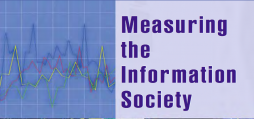The ITU released its latest edition of Measuring the Information Society. The report includes the ICT Development Index, aimed to capture the level of advancement of ICTs in more than 150 countries worldwide. The Index also measures the global digital divide and examines how it has developed in recent years.
The report features a new ICT Price Basket, which combines fixed, mobile and broadband tariffs for 2008 into one measure and compares it across countries.
Here are some key findings:
- Access to the Internet via mobile cellular networks has grown rapidly with the increasing availability of IMT-2000/3G networks and enabled devices, including mobile handsets and data cards.
- In the developing world, mobile phones have revoutionized telecommunication and have reached an estimated average 61 per cent penetration rate at the end of 2008 – from close to zero only ten years ago.
- Given the limited availability of wired access in many of the world’s developing countries and rural areas, and the rapid spread of IMT-2000/3G mobile cellular networks, mobile broadband is opening up exciting and new possibilities. Despite low penetration rates of mobile broadband in the developing world (less than one per cent by the end of 2007), it has a clear potential to help more and more people communicate, and increasingly at high speed.
- The Report shows that there is a strong link between the level of ICT and the
level of income, and the relationship is growing stronger over time. - Most interestingly, the ITU ICT Price Basket is published for the first time. Prices for ICT services vary greatly between countries, not only in absolute terms (i.e. US$) but also when they are adjusted to purchasing power parity (PPP), and when they are presented as a percentage of GNI per capita. Results illustrate that high-income, developed countries tend to have lower relative prices for ICT services (as a percentage of GNI per capita), whereas low-income, developing economies tend to have higher prices. Nevertheless, there are some important exceptions of countries where ICT prices are below-average compared to their income levels.


Post new comment